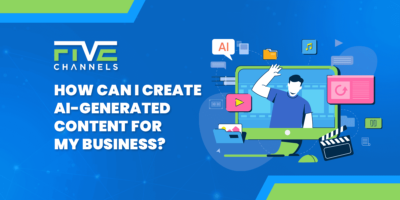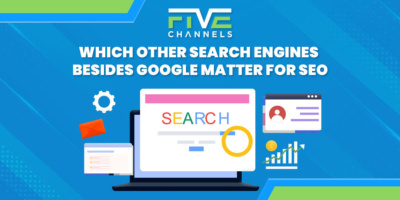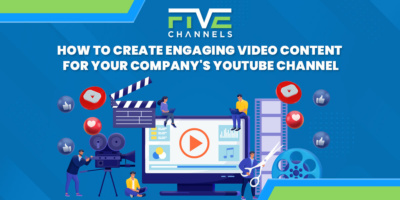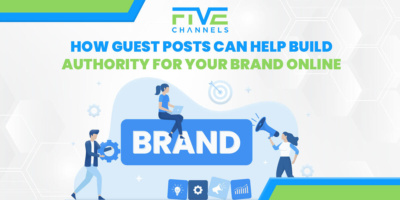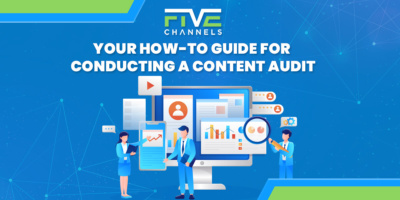If you’re thinking about advertising on Facebook, take a step back. Here’s what needs to come first.
Facebook is the world’s largest social media platform. The company has made 40% YOY growth, driven by advertising revenue. 3 million companies have placed ads there. How do those companies succeed?
Advertising on Facebook is notorious for being confusing. But recent advances have made it more accessible to advertisers. 2018 is now the Golden Age for social marketing. Facebook advertising is right at the center of the revolution.
Want to learn everything you need to know about advertising on Facebook? This brief guide is your starting point for success.
Lessons From The History Of Advertising On Facebook

Of course, “Thefacebook” didn’t start as a platform for advertising. At the time, Mark Zuckerberg insisted they refuse advertising entirely. There was one exception: $10 to $40 “Flyers.” Students used these ads to promote parties and social events.
Flyers would evolve into the advertising mechanisms we see today. Zuckerberg would later add personalization features for higher prices. Advertisers could target based on gender, age, and location. They could even target based on politics and relationships.
Why Advertise On Facebook?
Facebook’s appeal stems from its consolidation of active consumers. Those users provide key information about themselves. This information would be costly for advertisers to collect by any other means. This consumer data allows advertisers to target with less time, cost, and effort.
In 2006, Facebook launched its “Share” feature. This would lay the groundwork for viral marketing. The phenomenon is completely user driven. It is cost-free for advertisers but remains difficult to achieve today.
In 2008, companies engaged users without formally advertising on Facebook. Facebook’s News Feed quickly became its centerpiece. Brands could create their own Facebook Pages at no cost. Through trial and error, marketers began using social marketing and engagement.
The first controversy over advertiser access to Facebook data was in 2007. Facebook had been using an advertising program called Beacon. This gave advertisers freedom to post on user’s feeds about products they had bought on those brands’ websites.
Facebook was forced to settle a $9.5 million class-action lawsuit with its users.
Who Started Advertising On Facebook?
Party Poker was Facebook’s first big advertiser. Facebook used a cost-per-acquisition (CPA) model. Party Poker would pay Facebook $300 per new subscriber directed from their Facebook ads.
This was a huge financial success at the time. The Party Poker campaign brought in $60,000 each month on average. But the success was short-lived. Gambling was banned in the U.S. shortly after. Facebook was forced to cancel the deal. 
The Facebook advertising model matured as their clients became larger. Both Apple and Victoria’s Secret delivered large sums of revenue in 2005. Each campaign had its own payment structure.
Apple sponsored an Apple ‘Group,’ one of the first of its kind. The company paid Facebook a simple $1 per member each month. It was a successful scaled model. Facebook made hundreds of thousands per month as users flocked to the popular brand.
The Victoria’s Secret campaign was also successful. It’s payment model called for a flat monthly payment of $25,000. This limited risk to Victoria’s Secret, despite being less profitable than Apple’s campaign.
What’s Facebook Advertising Like Today?
Facebook now provides a suite of tools for building ad campaigns. This includes choosing an audience, goals, and a budget. Facebook even helps advertisers with inspiration for their ads. Facebook supports design, placement, and campaign management as well.
Today, Facebook pay structure is far more flexible. It revolves around advertisers’ goals and their budget. Facebook helps them achieve the KPIs they choose. They can set automatic limits to their spend on each campaign as well.
Still, Apple and Victoria’s Secret set a standard for advertising on Facebook. Facebook’s Target Rating Points (TRP) plan reflects Apple’s scalable system. Facebook bills clients based on impressions. These can change from month-to-month, which changes the cost.
Facebook’s Reach & Frequency plan lets advertisers set limits in terms of reach. This controlled delivery allows for a set price. An advertiser can choose to reach 200,000 people, for example. The advertiser makes one payment, just as Victoria’s Secret did. But the new model is more developed with advanced targeting abilities.
Next, we’ll review some of those capabilities. We’ll start with the basics of advertising on Facebook for the first time. Then we’ll proceed into campaign creation.
Facebook Advertising Fundamentals
Facebook’s success stories show small businesses really profiting from advertising on Facebook. Apparel retailer Pair of Thieves multiplied their online sales by 8.3x. BottleKeeper’s re-targeting campaign drove $25,000 indirectly attributed revenue. Facebook can divide billions of people into infinite customer segments. There is plenty of success to go around.
Meanwhile, 62% of small business owners say Facebook ads miss their targets. One small business compares advertising on Facebook to handing out business cards at a social gathering.
Advertising on Facebook has a spectrum of success. How can companies reach the “success stories” side?
Who Are Your Customers?
The “business cards” company revealed a lot about their strategy. First, they compared their creative content to business cards. (Not very compelling.) Second, they described their engagement method as intrusive. Do they know their customers at all?
“Buyer personas” are profiles marketers create that personify the qualities of their best customers. This can include age, gender, and location. Buyer personas can also include interests, behaviors, and purchasing habits. Companies develop them using data about existing, satisfied customers.
Buyer personas can be created using existing customer contact lists. Advertisers can also use buyer personas to further build those lists. These are essential to any marketer’s tool belt. That value should carry over to their Facebook ads.
The performance of Facebook ads reflects what advertisers bring to the table in identifying their audience. Facebook offers three options for finding that audience:
Core Audiences ask advertisers to use Facebook’s’ tools to build their audience. Advertisers can select their audience manually based on identified characteristics. Advertisers must ensure their buyer personas align with the options available. Advertisers who have not invested in building buyer personas will be unable to make the best selections.
Lookalike Audiences allow you to find people similar to your customers. Again, developing strong buyer personas is essential to this technique.
Custom Audiences allow advertisers to connect with people on their existing contact lists. Facebook says this can improve relationships and drive sales. Advertisers who don’t have actionable lists will not succeed with this technique. Those who prepare lists that will advance their businesses interests will.
What Are Your Business Goals?
Marketers must have overarching business goals. They must think of their purpose for advertising on Facebook within the context of those goals. For many marketers, Facebook advertising is not aligned with their company’s objectives from the very start.
Facebook identifies several metrics that marketers use to drive ROI. These include:
– Create awareness
– Generate leads
– Earn loyalty
– Boost sales
– Build your presence
These are common metrics for marketers when measuring campaign success. All of them sound great, and appear as menu items on the Facebook Business website. It’s easy for marketers to select their goals at point of contact with Facebook. This is a big mistake.
Marketers must identify their campaign metrics ahead of time. Simply selecting from Facebook’s menu is like handing the keys to Facebook entirely. Advertisers learn they play an active role as the campaign continues.
How Will You Manage Your Campaign?
Facebook offers sophisticated tools that drive returns for its advertisers. But advertisers must play a big part in carrying out that success. The platform will provide insights as your campaign progresses. Your ability to act upon them will determine the success of your campaign.
Social media strategists can help you enhance your engagement during the campaign. Techniques like brand monitoring enable advertisers to understand how customers perceive their brand. Strategists help advertisers use user-generated content to boost traffic.
Some advertisers hire specialists to manage their social media accounts on their behalf. This full-time support helps advertisers improve engagement with their audience. These methods improve the way companies fulfill their responsibility to the performance of each campaign.
Creating Your Facebook Campaign
Companies who understand the fundamentals of advertising on Facebook can move on to develop their strategy, budget, and engagement strategy. Then they can determine what creative content will drive the best performance.
How Will You Develop A Strategy?
Facebook has built-in features that help advertisers develop strategies for their campaigns. They can determine their existing audiences’ preferences and behavior. They can use that data to create new targeted audiences.
There are additional strategies to employ using Facebook technology. After generating new targeted audiences, advertisers can use Facebook’s testing features. But using Facebook to determine campaign strategies isn’t necessarily the best starting point.
Advertisers should avoid making assumptions about demographics before beginning a campaign. Developing a clear strategy with known customer characteristics is the best starting approach. However, advertisers should optimize the campaign as it is running.
How Will You Determine Your Budget?
Advertising on Facebook can be sensible and subtle, or costly and expansive. For example, small businesses with a limited budget may prefer Reach & Frequency plans. 
They may budget for experimentation with Facebook advertising. They may budget for an important but controlled brand initiative as well.
Some advertisers may be willing to pay more for high performance in key areas. These can include awareness, leads, or revenue.
Ultimately, advertisers can keep risks low. The scalable payment options mentioned previously ensure they will never exceed their budget to the dollar. Or, they can be open to high performance. In this case, the success of the campaign should make up for high costs.
How Will You Engage Your Customers?
When advertising on Facebook, companies should start by building on existing relationships. Engagement strategies can begin with a company’s email list or database. These contacts are already familiar with that brand. They are more likely to convert if they have an existing positive relationship.
Placement also contributes to engagement. Facebook can place ads in Instagram, Audience Network, and Messenger. Advertisers can create campaigns that run across all channels. More importantly, advertisers can identify the apps, websites, and devices that their customers prefer to use. Advertisers should consider their campaign goals before making placement decisions.
Advertisers can optimize their campaign to increase engagement as well. Forbes recommends that optimizing your campaign after 3 – 5 days can improve engagement and drive KPIs. For example, gender and certain age groups may convert more than others. Forbes recommends engaging only the groups that are converting.
How Will You Measure Your Campaign Performance?
As mentioned, deciding what will be the measure of campaign performance is critical during the strategic development stage. Facebook provides several metrics companies can use to measure the success of their campaigns, such as:
– Reach
– Frequency
– Targeting
– Cross-Device Performance
Companies can optimize how they engage with customers using these performance metrics. However, they should consider whether or not these metrics align with their campaign before starting. Those will be the ultimate measure of a campaign’s success.
Choosing Your Creative Content
 Creative content is the most difficult and most important aspect of advertising on Facebook. Specific campaign goals will help marketers determine what is the best format for their content, and what the details of that content will be.
Creative content is the most difficult and most important aspect of advertising on Facebook. Specific campaign goals will help marketers determine what is the best format for their content, and what the details of that content will be.
Facebook offers several formats, such as:
– Photos
– Videos
– Carousels, which show multiple images or videos in a single ad
– Slideshows
– Collections, which tell a story that showcases products
Advertisers are increasingly curating user-generated content for their campaigns as well. Including user-generated content invites customers to become part of the brand story. Storytelling is an advertising strategy that is growing in popularity for advertising on Facebook. This extends into other marketing channels as well.
Establish Yourself
Advertisers must understand that preparation and ongoing support are the most important factors to a successful Facebook advertising campaign. This will determine what is actually in front of the customer. The most successful advertisers have one thing in common: outstanding creative.
But outstanding creative comes from campaign strategy, insight, and optimization.
Achieve Your Best Possible Campaign
The most complex step when advertising on Facebook is the strategic phase. Start your campaign on a clear path to success. Contact Us for a free digital marketing review of your current strategies. Our team will provide tips for driving leads and revenue.
Owner and Chief Marketing Officer, Jason Hall, and his team specialize in creating brand awareness / traffic and lead generation / marketing funnel and conversion optimization, while utilizing the appropriate marketing channels available within your industry. With diverse clients throughout the world, Jason's team is well connected within many industries to assist with your marketing strategies. With no long term contracts and various levels of service, Jason's team will increase the quality of your online traffic, leads, and sales.
About the author...
Located in the heart of the Emerald Coast - Destin, FL, founder and Chief Marketing Officer, Jason Hall, and his team specialize in creating brand awareness / traffic and lead generation / marketing funnel and conversion optimization / and PR campaigns, while utilizing the appropriate marketing channels available within your industry.
With diverse clients throughout the world, Jason's team is well connected within many industries to assist with your marketing strategies. With no long term contracts and various levels of service, Jason's team will increase the quality of your online traffic, leads, and sales.


